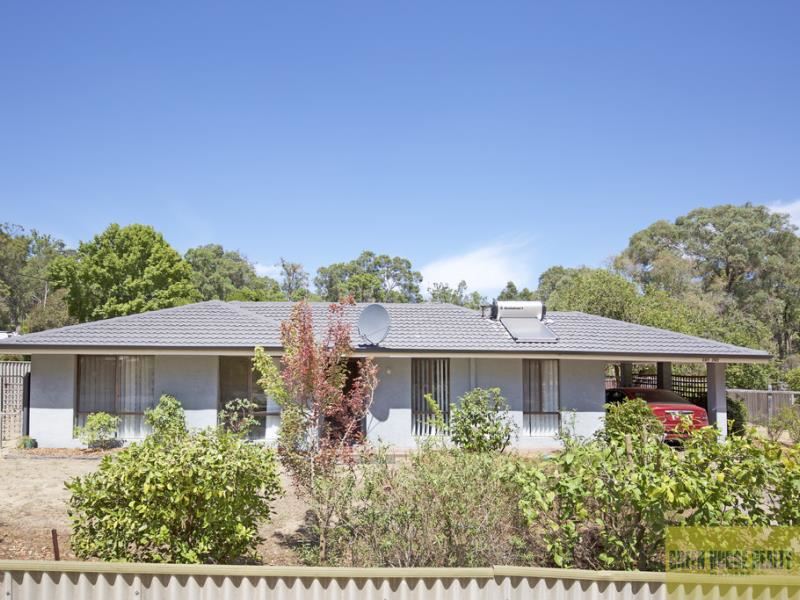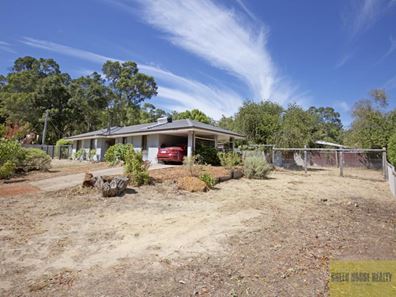Great Holiday Home or Retirement Property
This 3 bedroom, 1 bathroom home is just waiting for you to give it your own personal touch! It is on a large corner block of 853sqm with rear access on both sides. The home has a renovated kitchen with country charm and a renovated bathroom. The 3 bedrooms are good sized with 2 having built-in robes. There's a large lounge room with lovely wood floors and reverse cycle air conditioning and the kitchen/dining room has a sliding door which leads out onto the patio area which overlooks the back yard and small garden shed. A small stroll to the sports ground and town centre with coffee shops and delightful food.
Contact Ian Mullett on 0404 142 128 to arrange a viewing of the property.
Property features
-
Carports 1
Property snapshot by reiwa.com
This property at 21 McLarty Street, Dwellingup is a three bedroom, one bathroom house sold by Ian Mullett at Green House Realty on 14 Feb 2020.
Looking to buy a similar property in the area? View other three bedroom properties for sale in Dwellingup or see other recently sold properties in Dwellingup.
Nearby schools
Dwellingup overview
Dwellingup is located in a timber and fruitgrowing area in the Darling Range ESE of Pinjarra. Townsite lots were surveyed at this place by Surveyor W.F. Rudall in 1909 after the Lands Department became aware that the site was planned as the terminus of the "Pinjarra-Marrinup Railway". Names suggested for the place by Rudall were "Dwellingerup" or "Marrinup", after nearby brooks, or "McLarty" after a local MLA who had been very active concerning the railway. Surveyor General H.F. Johnston chose "Dwellingupp" after being misinformed regarding the spelling of Dwellingerup Brook. Ignoring a suggestion from the Under Secretary to amend the name to "Dwellingdown", the Minister for Lands approved the name as "Dwellingup" in December 1909. Eventually, the spelling "Dwellingupp" was chosen by order of the Under Secretary for Lands, and the townsite was gazetted as Dwellingupp in February 1910. The spelling was amended to Dwellingup in 1915. Dwellingup is an Aboriginal name said to mean "place of nearby water". The town was burnt out by a bushfire in 1961 but was rebuilt.
The double 'p' spelling in the original gazettal of this name was used because the Lands and Surveys Department had adopted a system for spelling Aboriginal names developed by the Royal Geographical Society. A number of Aboriginal names ending in "up" were for a time spelt with the "upp" ending (including Kirupp, Kulikupp, Manjimupp and Mungalupp). The RGS system had a rule that vowels are pronounced as in Italian and consonants as in English. This would have meant that names ending in "up" should have been pronounced as "oop", because the Italian "u" was a long "u", as in flute. These Aboriginal names were meant to be pronounced as "up", and the Department asked the RGS for a rule to assist in correct pronunciation. The RGS solution was that doubling the following consonant shortened the preceding vowel, and this meant the "upp" ending ensured the "up" pronunciation. However, this particular rule was rescinded in 1915 for SW towns with the suffix "up", as the Australian way of pronouncing the letter "u" was almost always short, and rarely the Italian "oo".




